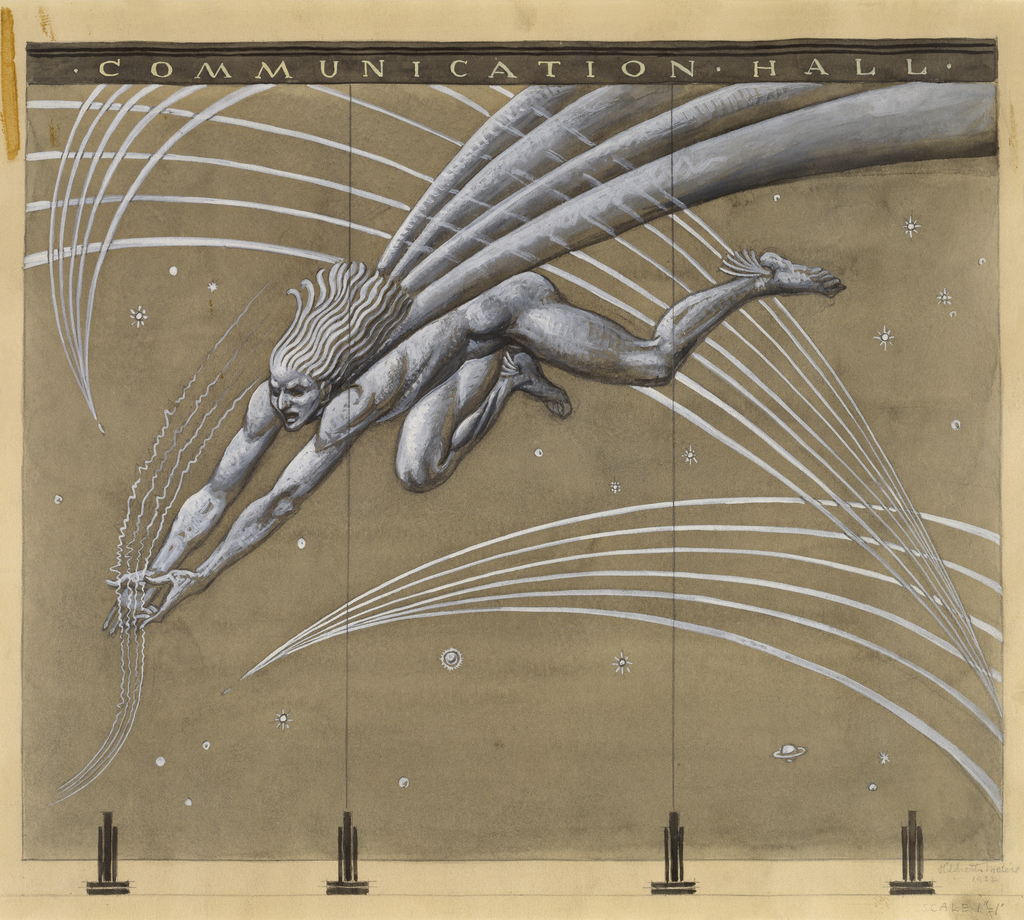Hildreth Meière (1892-1961) was a distinguished Art Deco muralist, painter, mosaicist, and decorative artist often applauded for her defiance of normative standards against the professional success of females. In 1936 she wrote, “It drives me wild to be spoken of as ‘one of the best women artists’. I’ve worked as an equal with men, and my rating as an equal is all that I value.” Indeed, Meière’s artistic achievements gained great attention throughout the art world during her lifetime and continue to be revered today. Here in New York City, her metalwork medallions prominently adorn the façade of Radio Music Hall.
Meière’s capacity for translating abstract themes into narrative images is evident in her commissions for the Chicago World’s Fair, held from 1933-1934. This World’s Fair, celebrating the city’s centennial was named “A Century of Progress.” The theme of the fair was technological innovation, and fittingly the fair’s motto was “Science Finds, Industry Applies, Man Conforms.” Meière’s Design for Sand-Blasted Glass Mural: Mercury Gathering Air Waves Amidst Planets and Stars, though never executed, was designed to grace the architecture of the Radio and Communication Building. Interestingly, the Communication Hall was connected to the Electrical Building to symbolize the vital relationship between communication and the various industries devoted to electric power.
In the mural design, Meière depicts Mercury (the patron god of commerce and communication) diving through the sky to gather air waves in his outstretched hands. Air waves are the medium through which radio and television signals are broadcast. Mercury’s swift flight from place to place is made possible by his winged feet, which are easily recognized in Meière’s drawing. During the turmoil of the inter-war years, speed was not only a representation of modern transportation and technology, but a figurative symbol of hope and optimistically moving forward to a better tomorrow.
